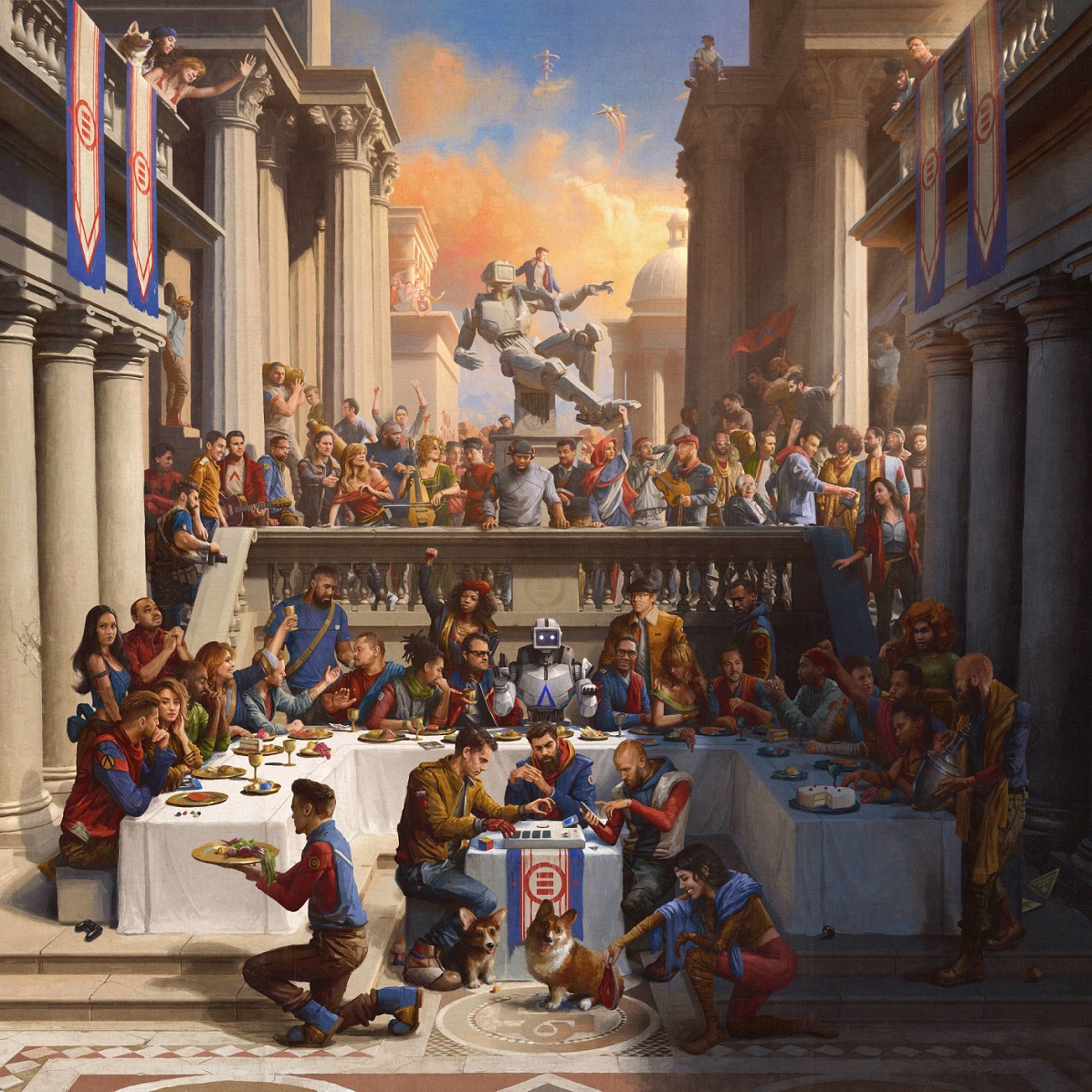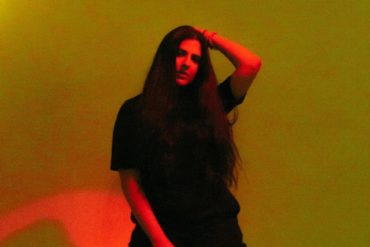Konradsen’s breathtaking debut album ‘Saints and Sebastian Stories’ is a sonic and musical masterpiece – as intimate, stirring, and fresh a listen now as it was the first time we heard it. We spoke with the duo’s Eirik Vildgren on the album’s creation, finding safety in music, his inspirations, and more!
Saints and Sebastian Stories – Konradsen
It’s been five months since the release of Konradsen’s stunning debut album, and yet it sounds just as intimate, stirring, and fresh now as it did then. Released October 25, 2019 via Cascine, Saints and Sebastian Stories is a sonic and musical masterpiece: An artistic achievement three long years in the making, and yet the very first release for the Norwegian duo of vocalist and pianist Jenny Marie Sabel and multi-instrumentalist Eirik Vildgren.
Previously featured as one of Atwood‘s 2019 Albums of the Year, few records strike with more immediacy and weight than Saints and Sebastian Stories. Konradsen’s sound is hauntingly delicate to a painful degree and true to the self in a magnificently beautiful manner. An exercise in the power of community and the magic of musical vulnerability, the record finds Konradsen weaving their audience through a wondrous and poetic indie folk tapestry. Their songs come alive with a litany of string, reed, and brass instruments that fill the air with a familiar warmth; alongside this often sweet and intimate ambience, the duo inject sound clips and other studio-related production work that help elevate their music to new heights. They are experimenters, and their first adventure together is one that feels as complete as it is fulfilling.
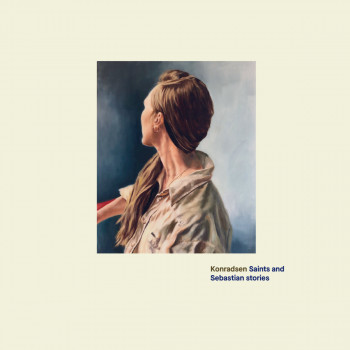
Whereas Saints and Sebastian Stories is a true “album” experience in the most classic sense, few songs are as elevating, transformative, and breathtaking as the record’s singles “Baby Hallelujah,” “Never Say A,” and “Television Land” – each of which brings something distinctive and unique to the fore. In Atwood Magazine’s Editor’s Picks back in October, we praised “Television Land” specifically for the way in which it channelled feelings of love and community into a stunning pastiche song:
“In some ways, this feels like the purest form of singer/songwriter art; it feels like what Justin Vernon did in his first two Bon Iver records, blending a muted minimalist folk with electronic distortions and massive heartfelt outpourings. Sabel’s voice comes to our ears over a soft series of piano chords, her words moving and bright in the dark canvas this pair have painted for themselves and listeners alike. Slowly, methodically, more voices enter the story. By the two-minute mark, “Television Land” has transformed from an intimate upheaval to an serene celebration – a communal anthem, of sorts. Konradsen have described the song as an attempt to express a sense of community: “Voices, stories, instruments that all come together in the end.” What truly shines brightest in this song, however, is the band’s own sense of unity and oneness. They create a soul-stirring four-minute journey that embraces the magic of music, vividly showing listeners just how powerfully a single piece of art can move us.
Fail through files
looking through them lives
in the night
It’s not the same truth
to poke
not the whole tooth
in the glass
The primary operative word for the Konradsen experience is vulnerability: Their songs, no matter how many times you listen to them, feel like they were lifted straight out of the dark, deep depths of the soul.
Their music is reminiscent of 2011’s Bon Iver, Bon Iver: The songs are seductive in both their mystery and their minimalism. When you listen to this music, don’t try to understand where it came from; rather, seek to understand how it wants to make you feel.
It’s the more divine, the more ethereal, the more things you don’t understand about life, which I think you can really find in our music.

Konradsen are continuing their musical journey in 2020, but for the purposes of our conversation, we focused around the ins and outs of their debut album. Dive deep into Saints and Sebastian Stories and get to know Konradsen’s many colors through our in-depth conversation with Eirik Vildgren! Konradsen are more than an “artist-to-watch”; they’re an artist you need to know now. Few records evoke as much purity and humanity as Saints and Sebastian Stories; it truly is, as they hoped it would be, one for the annals of history – a bringer of light, joy, and love to all who discover it.
We really set a goal of making one full album that would be like, a “classic” album.
Saints and Sebastian Stories – Konradsen
MEET KONRADSEN
Atwood Magazine: Eirik, thank you so much for your time today! With your debut album out, how are you feeling?
Eirik Vildgren: It’s a good feeling. Yeah. We spent a long time making this thing; it feels like it’s our small baby, releasing it into the world. At the same time, it also feels strange – because we’ve spent so much time! It’s been three years on and off making the album. And then you work it so much and you know it well. Then when you give it out, you let it become someone else – and that’s a part of the music process. The music evolves, and that’s something you’re not a part of in the same way. I think that’s why it’s strange, because now people will have their own relationship to the music that’s not something to do with me or Jenny, and all the friends that we bring into it. But that’s also wonderful – that’s the wonderful thing about music!
Plus it becomes brand new again, when somebody listens to it! So it's a very funny line that you bridge.
Vildgren: Yeah! Also, that we can let other people hopefully have a connection with, become familiar with, and incorporate our music into their life. For me, that’s the magic of music.
Totally, I completely agree with you. So Stereogum really said it best in calling this 'one of the most spectacular debut albums in recent history.' What does Saints and Sebastian Stories mean to you? What is its significance?
Vildgren: It’s the first album that I’ve ever made. We as a band, it’s our first record, but also me personally, I’ve never made a record before. So, for me, it’s been a huge learning process and, for me being in the early to mid 20s that I’m in now, making this record has been something that’s always been there the last few years, and it’s been quite influential. From being me as a musician, I’ve grown quite a lot because I’ve had to play a lot the instruments, I’ve had to find ways to produce the record – I’ve never produced anything before, so it was really a learning process; we really had to start trusting ourselves. That also includes personal growth. Whenever you do big projects, it will change you somehow, and you will come out differently. I don’t know what I would do if I didn’t make this album.
Whenever you do big projects, it will change you somehow, and you will come out differently. I don’t know what I would do if I didn’t make this album.
What does the album title mean - is it a reference?
Vildgren: It’s a line that popped up while we were writing the song “Written to the Others.” We do this thing where, one of our approaches to writing new songs is that we just go grab, microphones hit record, and we just do something in front of the microphones. And then Jenny just sang this line, “Saints and Sebastian stories,” and when we were trying to find album title, we went through lyrics and then we rediscovered this line, and we thought it was good in different ways. It’s quite a strong image for me; it evokes a lot of pictures. And of course, it’s got like three S’s which – we have a word for it in Norwegian; it kind of rhymes, in a way. It’s also earthly, really tactile, with just the name, Sebastian. It’s the more divine, the more ethereal, the more things you don’t understand about life, which I think you can really find in our music – both these things, you know, the earthy, tactile stuff with all the samples and scratchy sounds, but also the things you don’t really understand about the world, you know, “Baby Hallelujah” and all this stuff. I also have a really good friend who is one of my best friends, who is called Sebastian. I don’t know; maybe it’s got something to do with him!
I love how you said that - divine and ethereal; I think that so perfectly sums up the music that you've made at this juncture. And to let you know, the way we say it with the three S's, is alliteration. So what attracted the two of you to work with each other musically, you and Jenny?
Vildgren: I think first of all, we ended up becoming really close friends. I think that was first – because we knew each other from high school, and we both moved to Oslo. We were both doing music in Oslo and playing in a band. Then we started just playing her songs in the practice space. It took quite a while – it took one or two years, just doing that… we were both a bit shy people. So after playing together for quite a while, I had an exam in University where I had to produce a song, and I said, “Maybe we should try to produce this song,” because she was working with another producer and it wasn’t really working out well. Then I said, “Let’s try it just you me and see what happens.” And then we spent a few days in my bedroom. And then we just recorded “Dice” over those couple of days. After recording, we were like, “Oh maybe this is something, I don’t know.” We just put it away for a few months. and then we were playing a concert and we thought, “Oh, we have to release a song,” and then we just put the song on SoundCloud, you know, a lot of people just liked it. So we thought, “Oh, yeah, this is pretty cool.”
That's a pretty great story. How do you describe the music that you make? How do you describe Konradsen's music to your family members?
Vildgren: When people ask me what we play, I often just say it’s pop music, but it’s warm and it’s a lot of pianos and lot of trumpets… it’s a lot of sounds, I think; someone once said, “warm hazy,” and I think that also fits. It’s warm, and it’s also soothing. It’s very calm music, and tranquil. And I hope that it gives people some kind of peace.
I love that! An important quality in this record is community. Why is community so important for you to express through music?
Vildgren: It’s got to deal with the fact that we both grew up in different communities. She lived in this community, they had an outdoor kind of school where people would come and spend the year. It was religious as well, so she had a really strong and nice community with nice people surrounding her, which was a big part of her life. If you see the video for “Television Land,” you probably heard Bruce talking in the beginning – he’s a family friend of Jenny’s family who lived in Canada (he’s dead now).
Meanwhile when I was in high school, I was staying in this art community, furthest out in the fjord in an island in Northern Norway, staying there every weekend working, doing manual labor making rooms and making bedrooms… It stands on these pillars halfway into the ocean, so we have to swap those – that was a lot of working for me, and that was also quite an amazing experience. Being there was such an important part of my life and my development. So when we created this project, it’s not like we thought that explicitly that we wanted to make this a community; I think it happened, and then we realized that it had happened, and we choose to also use that as an aspect in the way we present ourselves. I think it just came very naturally to us.
I think it's so interesting that you and Jenny come from such different backgrounds. She, one of strong religious upbringing, you –
Vildgren: They are religious, but they’re, like – I said in another interview, that they’re like “hippie Christians.” Her parents really laughed at that. That was funny; they’re a part of this, not hippie, but you know, in the 70s these ideas? They were part of that, so they moved to Northern Norway to do this thing. I think it’s a religious community, but also quite liberal. Her musical influence is definitely from there.
So it sounds different, but it’s not too, different I think. Of course, it is different – the place I was staying at, it’s an experimental art festival every summer that lasts for a month. It’s also got quite a strong international art presence… It’s called Kråkeslottet (“The Crow’s Castle”) I was playing at the music festival when I was like 12 in a punk band, I was singing and playing guitar in a punk band. And then the owner, or the guy who runs the festival, he just really liked that, so we could come in the year after, and the year after that. And then he asked me if I wanted to be a part of arranging the concert, and I said yes. And then I asked him, “Hey, if you ever need help, I would love to come and help build stuff with you and do stuff.” And then I went, he drove me to this place… We spent like the whole weekend working underneath the docks, doing sewage pipes, fixing this stuff, and it was it was magical work.
So, diving into the album itself now: “Never Say A” opens this record with stunning introspection. “Hold my hand, I lean on through this; feels like I’m an all-time failure,” Jenny sings in the first verse. Why do you begin your album with the song?
Vildgren: Yeah, good question. I think I like that it’s the first single, and that we used the first thing as the first song track on the album. I think one of the reasons I wanted to do it like that was to open up with some energy. Go to the point, you know – just start! Also, I feel it’s a bit different. It’s not as heavy as some of the other songs; some of our songs can be quite melancholic, and this one isn’t. I just wanted to open in that way.
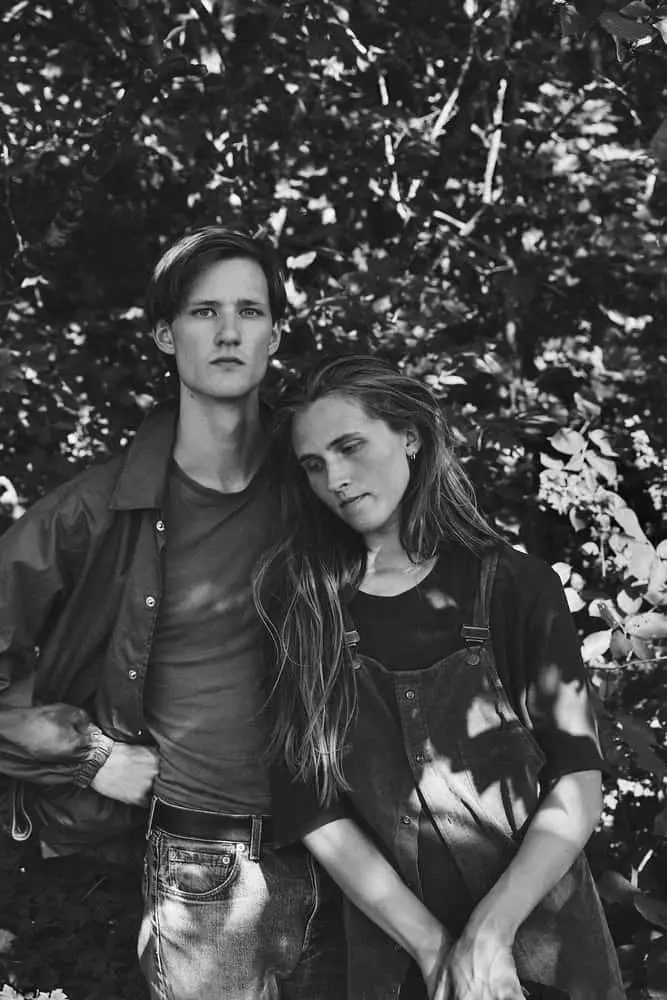
I totally get that. I really love that track, but I will say I actually had the song “Television Land” on my editor’s picks. It's one of my favorite songs released in quite some time. I'm still speechless every time I hear it: “It's not the guy with a fire by the railway, it's you.” What does this line mean to you? What is it what does it evoke when you hear it?
Vildgren: You know, it’s Jenny who writes the lyrics in this project. I think she has such a good effect for for strong and beautiful images, both how they sound, but also the pictures they evoke in my head. A lot of the pictures I don’t understand; I have to think a lot about them before I understand what they mean. For me, it’s quite poetic; this guy standing by the railway with a fire, burning… One of my interpretations is this guy standing by just watching, doing nothing. But you know, someone has to do it, you know? I don’t know if that makes sense.
I understand; what is special to you when you hear this song? What do you think about when you hear it? What is its place on the record?
Vildgren: It’s one of the more energetic ones, and I think it’s also for me, community wise, capturing this feeling of community, I think this is one of the top ones because it just slowly builds and it slowly includes more and more people. I think also, you know, Adam, who sings and plays bass in the band, he comes in with his vocals and he’s such a good singer. It’s such a pleasure to have him and record with him. And then he makes it, and then Ivad the drummer comes in, and my friend Thomas comes in with the tenor horn, and it’s just such a cool sound, but it’s also quite relaxed. It encompasses quite a lot, this song; I feel like it’s a lot and sometimes hard to explain everything it encompasses.
I think that's what makes the music so special. But, you know, this album with its various interludes and moments of complete silence, Saints and Sebastian Stories is a true journey from start to finish. How conscious were you and Jenny about developing this experience along the way?
Vildgren: I think we really wanted to make an album. We really set a goal of making one full album that would be like, a “classic” album.
First we were going to just record, be in the studio recording a single, and then we wanted to make it into an EP. And then we realized we wanted to make an album in-studio, but it wasn’t going to work in-studio, so we had to do it at my place in my bedroom, because that’s where we started and that’s where we were finding the sounds of the record. So we were very conscious of the album format while working, actually.
With the interviews, we really like the interludes and the way they tie the record together. Being inspired by people like Saul and Frank Ocean, of course, you know, this Facebook story from Frank Ocean and his mother talking about do not drink alcohol… We just love all these things and we were really inspired by it, but how can we include this inspiration without making people feel that we’re just copying it, you know? How can we do it in our way that makes sense for this record? So it was quite a challenge and we tried quite a lot of different things as well… There were a lot of things that we loved that were cut from the record, like people talking and doing stuff because it was too much, and we really needed to pinpoint it and make it accurate.
I think that with what you kept, like with Bruce, I think that's really special and really powerful. You can really feel how his little snippet sets the stage for “Television Land,” for example.
Vildgren: Yeah, definitely. With Bruce, we started recording “Television Land” with this sample of Bruce. And so we just put it in the beginning of the project, and we knew we had to make a song from there. And then it turned into “Television Land,” and so it’s quite interesting to see where the inspiration for “Television Land” came from.
“Dice” was the last single before your full album release. How did you make this song and why is it special?
Vildgren: This is the song I was talking about earlier when Jenny and I had been playing together for a year or two, when we were just doing a bit here, a bit there, just good friends who liked to hang out. like to hang out but it wasn’t anything serious. I remember she told me, “I don’t know if I want to record this song because it’s a bit too personal,” but then when she played it to me I was like, “It’s so good! We have to record this song.” And we spent like five days in my bedroom talking about it and going through it, because it has a lot of emotions as well. For us, that was a really big part of the process of recording this song, you know, just talking about what’s happening in life, in my life, in her life, and just getting to know each other better as well. Because I never produced anything properly before, I didn’t know how to do it. I knew, you know, how to use microphones and stuff, but I hadn’t really actually produced anything that was worthwhile… And then we just started discovering we were experimenting with sounds, recording us drinking beer and just like hitting the piano… at a point, my brother was taking dishes out of the dishwasher and I thought he ruined the take, but actually he made the take what it was supposed to be. So it just happened!
That sounds so amazing. I love that. What I like about the record is that, for all that is so intimate and so personal, you don't let the songs just be themselves. You kind of remind us that these are two people who are making music at the end of the day – that this not just a song in a vacuum.
Vildgren: Yeah definitely. I think for this record, we were just like so used to the process of making not just a recording, but making the atmosphere and making a space for the song to sit in. It was something we were constantly searching for: What’s the space in this song? What kind of moment are we in right now? So that was a big part of it, because we are two people and we have to encompass both our worlds.
It was something we were constantly searching for: What’s the space in this song? What kind of moment are we in right now?
The first half of the album has the singles, but the second half of the album is such a special, powerful soundscape. The saxophones on “Red to Rhyme,” vocal layers on “No One Ever Told Us” and “Roasted,” and the piano and electronic snippets in “Give” make for a truly surreal, out-of-body experience. Can you talk about that back half?
Vildgren: Nice words! I like the fact that the record in itself feels really coherent, but the two halves feel distinctly different. And I remember – one of my good friends is a theater director, and he was saying this: “Make these blocks of experiences within the record,” and it was also something we thought about while putting it together. It’s not like the first ones are the newest or the latest songs, and the second half came after or first. “Red to Rhyme” was the second song we started recording; it was the last song we finished and the second song we started – it took so much time and we never could get it right, but I think we I think we managed it in the end.
Yeah, it’s quite an interesting story being told on the other half of the record, where we also have the interlude “Give.” As you were saying, it’s the same thing going over and over again, building and building, sucking you in – which was also a fun thing for us to experiment with. And then, I feel that “Written to the Ohters’ is such a good release for the record. It’s just so open and full of joy and life.
I know exactly what you mean; I think it's very special, and I love how that experience on the second half contrasts with the first half of the album. It's very distinct, but it brings us all the way to the end, which is important.
Vildgren: Yeah, definitely. That’s one of the functions of the of the second part. It’s just, you know, in Greek mythology when you’re going to die and you step into the boat and it takes you to the end.
My big question for you is, what are your personal favorite moments on the record?
Vildgren: Oh! Good question. There are so many babies, you know… Some of my favorite moments are just very subtle, like I love “Odd Mistake,” the first verse before the first chorus, and it’s just like, I think you hear me saying something and there’s some crackling noises in the room, and then it just suddenly cuts away. I love those things. To me, that’s magic.
I also love when Jenny’s vocals come in, in “Give.” The first time she really sings, “Give it a lot if you don’t want to give up.” I think that’s a strong moment… I love “Baby Hallelujah,” when it was supposed to be ending and we had finished the song, but we had two friends in the studio and they sang the end, and then we just used them instead and finished the song.
It sounds like the small moments are really the biggest ones for you. Let me ask, why did you close the album with “Written to the Others”? What is special about that ending?
Vildgren: You know, you can’t get away from the fact that a lot of our songs are a bit melancholic and sad in a nice way, and I feel that “Written to the Others” is more open – it’s a very hopeful song. Also sonically, it’s quite open, I feel; spacious. It really feels like it’s concluding something. For me, it feels like it’s setting the end mark. It was always quite obvious that this song should finish the record. And it’s also got this long tail that we really like, with our friend Tom, he was coming in with these guitars, and it’s just like we’re giving it out – it’s written to the others now – getting the record out into the world.
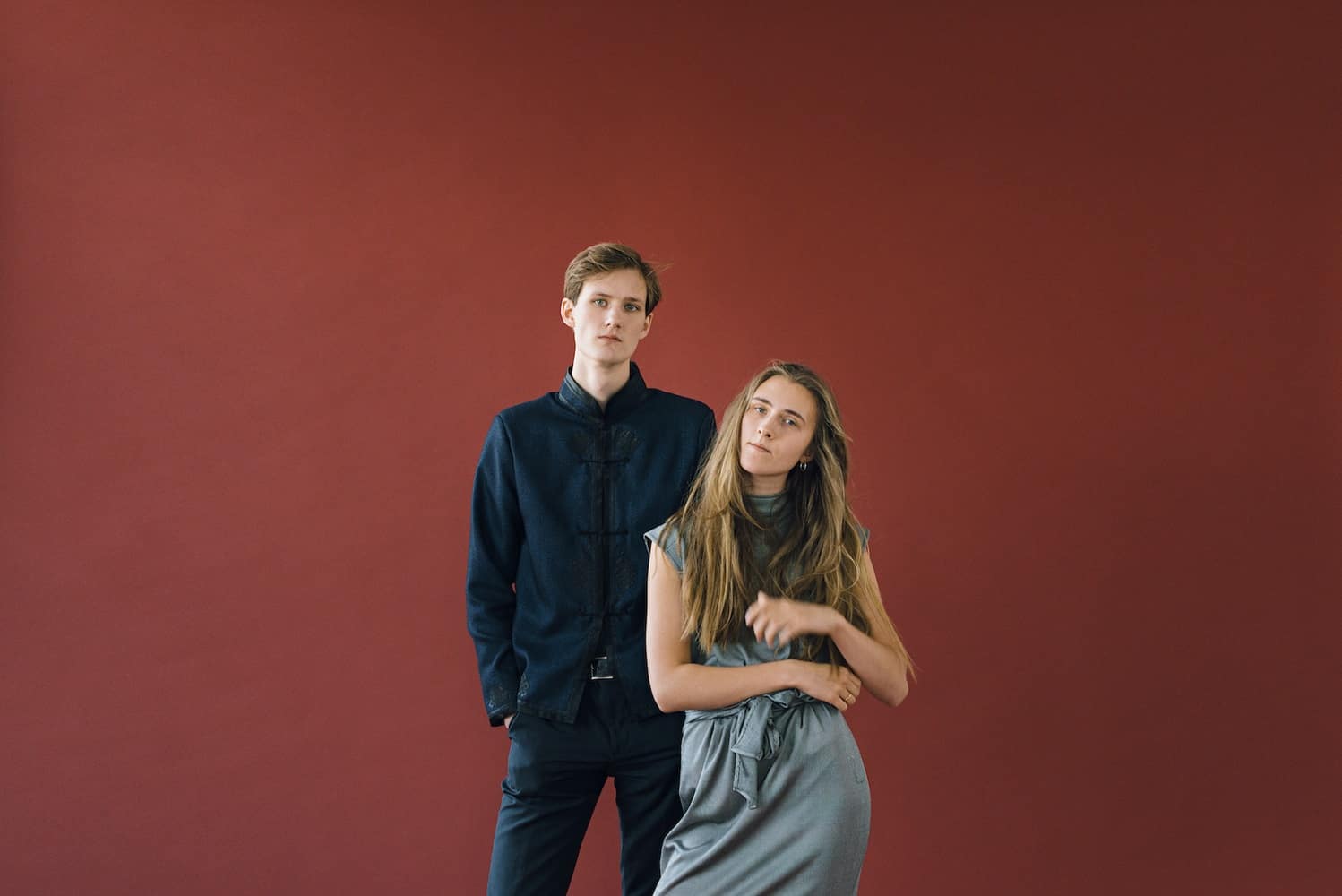
Do you feel you could have made this album a couple years ago when you first started working together?
Vildgren: No, definitely not. I think it was very important for us to spend two years making it and not doing it in six months, or one year, or two years. I think personally, we couldn’t do it. I wouldn’t be confident saying, “This is good enough: this is what it should be,” because it was such a search all the way through, really testing it and testing it on ourselves! How do we really want this to sound? What is the sound that we’re searching for?
Another thing: I don’t think necessarily the sound was in our heads from the beginning. I think we developed it as we went. The plan was to release stuff much earlier, but I like that about us: That we had the courage to say, “We’ll wait, we’ll take our time, and we’ll finish it the way that we want to finish it – a way that we feel happy about and comfortable with.”
Stepping out of the album for a minute now - we've talked about the sound of the record for such a long time. What is it about the warm, mellow, kind of minimalist approach that appeals to you personally? Why do you think you are attracted to these sounds and not, you know, a rock record per se, or something else?
Vildgren: I think that when one is making music, you always search for a place within yourself. As a person who makes music, for me, it’s like, Where do I feel safe? Where do I feel good? When I listen to other people’s music, that’s what I go for. And then that’s what I have to go for when I make music as well.
So I make music that kind of makes me feel good, and feel that I am able to relate to the world around me in a way that I understand it, and, for me, making music in this way, it allows me to do this. I could never make like a rock record, or I could never make like a big… Like, I’m not even capable of doing that, I think, because it’s not in my world… I probably am capable, but I don’t know.
I think that when one is making music, you always search for a place within yourself.
I get it. So, it's been a while since you finished this album. Do you already see your music developing as you go beyond album number one?
Vildgren: Yeah! Now that we’ve done this, I’m looking forward to doing the second one actually. I’ve been thinking about the second album for like one and a half years now. We haven’t started making it, but how we want to do it, what direction… I think the world always puts limitations on you, and the world will always structure the way you work in one way or another. Like with this record, we both had a lot of time; we could really delve into it and spend time together, talk. But now Jenny’s got a kid! That’s the huge difference for making the second album – we have to do it differently! So all these things will affect how the record sounds and the way we make music. I think it will be a different experience; I don’t know how yet, but definitely a different one.
Well, I think we all look forward to hearing it as it goes. So, finishing up, what other artists should I be listening to right now? Who's on your radar, personally?
Vildgren: It’s kind of in the same street as what we’re making – not the same street, but you can see the similarities. I just saw – I love the movie Eternal Sunshine of the Spotless Mind, and the reason I love it is that I think Jon Brion wrote an amazing score for this movie. I also rediscovered, which was also quite a big influence on our record, Carrie & Lowell by Sufjan Stevens. A friend of mine just a few weeks ago showed me this guy called Blake Mills, he’s like a guitar genius, a true virtuoso musician. He produced the latest record for Perfume Genius, – which – “Alan,” off the last Perfume Genius album, is one of my favorite songs from the past year; it’s such an amazing song. The soundscape of that song? I don’t understand how they made it – and I really want to know how they made it, because I want to make something like that!
I’m also listening a lot to Leif Vollebekk! I love the way he makes music. He’s so concerned, even though he’s so focused on capture the nerve in the music, he writes these songs and he doesn’t want to rehearse them too much, and then he goes into studio with his band and he tries to do everything in one take, and just try to be present while making music. His music is very different from our music – or not “very” different, but the way he produces it is. It makes me feel so much when he plays; emotionally, I’m really connected to that.
It's funny that you mention Leif, because we very recently featured him and his music on Atwood! Thank you so much for your time, Eirik, and congratulations to you and Jenny on Konradsen's debut album. It's such a powerful record, and I think what the two of you have created is truly special.
Vildgren: Thank you so much! Thank you, Mitch.
— —
:: stream/purchase Konradsen here ::
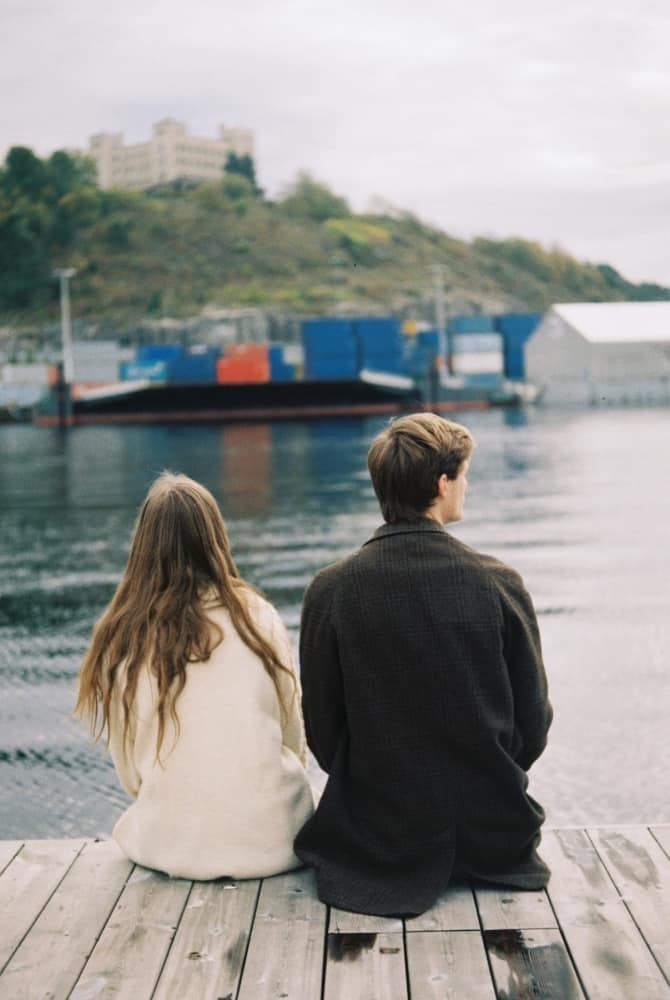
— — — —
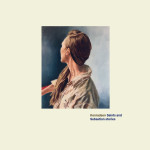
Connect to Konradsen on
Facebook, Instagram
Discover new music on Atwood Magazine
? © Sara Angelica Spilling
:: Stream Konradsen ::







